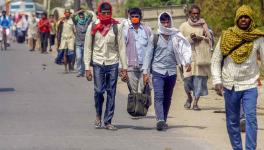Pandemic Drove Global Hunger up by 112mn, 71% Indians Unable to Afford Nutritious Food: FAO
New Delhi: The challenges to ending hunger, food insecurity and all forms of malnutrition keep growing. According to the United Nations’ Food and Agriculture Organisation (FAO), the COVID-19 pandemic has further highlighted the fragilities in our agrifood systems and the inequalities in our societies, driving up world hunger and severe food insecurity. FAO released a report with data collected up to the year 2020, on Wednesday, titled ‘The State of Food Security and Nutrition in the World 2022: Repurposing food and agricultural policies to make healthy diets more affordable.’
Despite global progress, trends in child undernutrition – including stunting and wasting, deficiencies in essential micronutrients and overweight and obesity in children, continue to be of great concern. Further, maternal anaemia and obesity among adults continue to be alarming.
The most recent data available suggests that the number of people unable to afford a healthy diet around the world rose from 112 million to almost 3.1 billion, reflecting the impacts of rising consumer food prices during the pandemic. This number could even be greater once data are available to account for income losses since 2020, since two years of pandemic and lockdown caused a significant drop in earnings and would have further added to malnutrition.
“Food price inflation due to the economic impacts of the pandemic have left 112 million more people unable to afford a healthy diet — this means a total of 3.1 billion people worldwide,” FAO director-general Qu Dongyu said while releasing the report. A billion equals 100 crore.
The ongoing war in Ukraine is disrupting supply chains and further affecting the prices of grain, fertiliser and energy. In the first half of 2022, this resulted in further food price increases. At the same time, more frequent and severe extreme climate events are disrupting supply chains, especially in low-income countries.
The report also noted that over 97 crore Indians, or about 71% of the country’s population, are unable to afford nutritious food — compared with a 43.5% figure for Asia overall, and 80% for Africa.
According to FAO, it costs an estimated $2.97 (Rs 235) per person per day (in 2020) in India to afford a healthy diet, which means- food expenses of Rs 7,600 per month for a four-member household.
While 70.5% of Indians were unable to afford a healthy diet, the corresponding numbers were lower for China (12%), Brazil (19%), and Sri Lanka (49%). However, Nepal (84%) and Pakistan (83.5%) fared poorer than India.
About 80 crore, or close to 60% of Indians, are dependent on subsidised food rations provided by the government wherein beneficiaries receive five kg of cereals per person per month at just Rs 2-3 per kg, in addition to special pandemic assistance of a free five kg of grains under the Pradhan Mantri Garib Kalyan Anna Yojana. However, the scheme is often criticised as cereal heavy — supplying enough calories but not adequate nutrition.
The report further states that with eight years remaining to end hunger, food insecurity and all forms of malnutrition (SDG or Sustainable Development Goal Targets 2.1 and 2.2), the world is moving in the wrong direction. As this report reveals, food insecurity further deteriorated in 2021, and the only progress made toward the 2030 global nutrition targets was for exclusive breastfeeding among infants under six months of age and child stunting, while anemia among women and adult obesity is actually worsening.
The assessment in last year’s report of the situation in 2020 – the year the COVID-19 pandemic spread rapidly across the globe – revealed major setbacks, with growing numbers of people facing hunger and food insecurity as the unprecedented crisis exacerbated inequalities that were already stalling progress prior to the pandemic. It also highlighted that malnutrition in all its forms remains a challenge and that child malnutrition, in particular, is expected to be higher due to the effects of the pandemic.
Get the latest reports & analysis with people's perspective on Protests, movements & deep analytical videos, discussions of the current affairs in your Telegram app. Subscribe to NewsClick's Telegram channel & get Real-Time updates on stories, as they get published on our website.
























